by Todd Walker
Outdoor adventures can turn into survival scenarios without warning. If we knew of the crisis ahead of time, we’d simply take steps to avoid it.
But that’s not always possible.  The title of this article mentions two terms, self-reliance and survival, which need to be defined. I want to make the distinction because some of the fishing methods listed are illegal and should only be employed in a true survival situation not to stock your freezer for the winter.
The title of this article mentions two terms, self-reliance and survival, which need to be defined. I want to make the distinction because some of the fishing methods listed are illegal and should only be employed in a true survival situation not to stock your freezer for the winter.
Self-reliance is dependence on one’s own capabilities, judgment, or resources. The opposite of dependence upon others.
Let’s put survival into context…
Survival involves any situation where death is imminent if conditions do not change.
Running out of trail mix on a day hike is NOT a survival event.
Which begs the question… how long can you live without food? Conventional wisdom, which I seldom agree with, tells us about 3 weeks. You’ll eventually have to eat to stay alive in a long-term situation.
In a 72 hour survival scenario, you may be better served to fast and drink water.
But let’s face it, the majority of us will never be in a long-term wilderness survival scenario. But it never hurts to have a few survival fishing tricks in your tackle box.
If you’re not in a life or death situation in the backwoods, you’re simply backpacking, hiking, or camping. Looking at your short-term survival priorities, food is way down the list. However, eating becomes more important the longer you’re not found. And you don’t know if 72 hours will stretch into weeks.
There are also possible events where major disruptions happen or the rule of law goes bye-bye. Practically speaking, learning to legally catch fish now before an event can reduce your grocery bill and build food independence. Eating is part of being self-reliant. If you’re preparing for a disruptive event, hopefully you’ll have a portable water craft, nets, and heavy-duty fishing gear available and ready to go.
In a wilderness survival scenario, you’ve got your shelter, fire, and water squared away. Now you can give attention to that calorie depleted body of yours.
The water’s edge is your first survival fast food stop. All lakes, ponds, rivers, and streams are home to a rich resource of edible aquatic life. Don’t overlook the small stuff. Survivors are opportunists without a picky palate. Fish, large and small, are in the water. You have to convince them to join you for dinner.
Here’s how…
Pack Emergency Fishing Tackle
The ideal situation is to have a fishing kit with you in the backwoods. Fishing line, hooks, and sinkers aren’t going to add much weight to your pack.
I’ve seen many kits in Altoids tins that weigh very little and would serve to procure fat fish. I went a different route. My Cigar Fishing Kit allows me to use the aluminum sleeve as a hand fishing rig. The line is wrapped on the outside of the tube to allow me to cast into the water. However, in a 72-hour survival event, your time and energy would be better spent meeting other priorities than sitting on a bank hoping a fish hits a single hook.
Trapping animals is a numbers game. So is fishing. The more hooks you wet, the better your odds are of eating. That’s why I carry a more substantial fishing kit on longer backwoods trips. My minimalist Cigar Fishing Kit rides along in my haversack… always.
For a larger fishing kit, include these items…
- Pack plenty of hooks (30 to 40) in different sizes. Use small hooks to catch smaller fish which can be used to bait larger hooks for the big meal fish.
- A spool (200+ yards minimum) of fishing line. Spiderwire offers braided (super strong) and monofilament fishing line in many strengths. 10 to 12 lb. line is multitask line.
- Lead sinkers/weights. Yes, they add weight but are too convenient not to pack.
- Snap Swivels. Saves time re-tying hooks.
- Artificial lures and a jar of salmon eggs… when digging/finding live bait is not an option.
- Tarred bank line (#12 and #36). This cordage is in all my kits. It works especially well when setting up multiple hooks.
- Multi-tool. Useful for removing hooks from fish and too many other uses to mention here.
Fishing Techniques
Warning: Should you decide to use any illegal fishing techniques mentioned, do so for survival purposes only. While I don’t advocate breaking laws, the State’s rules go out the window when your life is on the line. Research your federal and state fishing laws.
Limb Hooks
Locate trees with low branches overhanging the water’s edge near cover. Most fish hang out in cover like weed beds, lily pads, and fallen debris. Casting into cover usually results in snags or lost tackle.
A boat or canoe makes tying limb hooks easier but isn’t necessary. Simply grab a green limb with your hand or a hooked stick and pull it to you on the bank. Tie a line with a baited hook on the limb and easy it back into the water.
For a larger fish, use bank line with a circle hook – my preferred hook for catfish. Setting 15 to 20 of these limb hooks dramatically increases your odds of eating and frees you to attend to other survival priorities.
Jugging
The idea is to tie a baited line on a floating device. It’s a sad fact that plastic bottles litter our woodlands. Other people’s trash is a survival resource if you develop a Possum Mentality.
One effective technique our neighbor used when he’d fish in our lake was to make a cane pole “jug” fishing rig. He ran a bamboo cane pole through a chunk of styrofoam and tied a line to the pole just to the side of the foam. Bob would bait the hook with a small pan fish and toss the rig into the middle of the lake and continue fishing with his spinning reel. When the pole stood on end, he’d haul in a lunker Large Mouth Bass!
It’s not likely you’ll find styrofoam and cane poles in the wilderness. However, you may happen upon a patch of bamboo or river cane. If so, cut a 8 foot section of bamboo 1 to 1/2 inches in diameter. Find a larger diameter (2-3 inches) and cut a piece with two compartments in tact. You could also bundle several smaller diameter sections together for the float if larger diameter bamboo is not available.
Lash these sections to the middle of the longer pole and tie on a baited line to one side of the rig. Toss the rig into a lake or pond and forget about it. When a fish takes the hook you’ll know it. The rig will stand on end.
Note: You probably won’t have a water craft to fetch the rig from the water in a wilderness survival situation. Tie a length of cordage or fishing line to the pole to retrieve the rig once a fish is on. Always carry a roll of bank line in your pack.
Trot Line
This method works in rivers and still water. A trot line consist of several baited lines dangling off one long line suspended between two anchor points (trees or limbs usually). Bank line is excellent for this application.
Secure the dangler lines (#12 bank line) along the long line with enough space between each dangler to not tangle under water with live bait swimming on the hooks. Of course, you’ll need live minnows, crayfish, or small pan fish to bait the trot line. You could also use rotting, stinking stuff as bait.
Spear Fishing
Metal fish and frog gigs are available and can be kept in your pack. Just cut a sapling for the handle. However, a down and dirt gig can be crafted from a green sapling alone.
Find shallow water and wait for fish to pass by – even snakes and frogs – then spear the critter. Take into account the angle of light refraction when spearing a target under water. It’s not as straight as it seems.
Herbal Stunning Agents
Native Americans and indigenous people around the world have used fish toxins to harvest meals. Common plants used in my area by the Cherokee are Black Walnut (Juglans nigra) and Polkweed (Phytolacca americana). The plant material was crushed and introduced to slow-moving streams or pools which stunned fish and cause them to float to the surface. They were easily harvested by hand, nets, or spears.
The bark and green husks on black walnut trees contain saponins which fish intake through their gills and stunning the fish. The same goes for Polkweed berries and leaves. Research your local plants to find which plants were used to stun fish.
Netting
You don’t pack gill nets or seine nets in your backpack probably. However, for long-term self-reliance, nets are a proven method of catching fish for large numbers of people. Store away a few for emergency food procurement.
Circular cast nets have weights on the outside edge that is thrown and used to catch bait fish in coastal areas. In the hands of a skilled net caster, a cast net can harvest a bucket of fish in no time.
Traps
This funnel trap is not a “survival” trap. Your time would be better spent in a short-term survival scenario than burning calories collecting resources and lashing cane. However, for a long-term, consistent fish-catcher, take your time and build it to last.
The beauty of any kind of trapping device is its ability to passively gather protein while you spend valuable time doing other stuff. Set it and forget it… like the crawfish trap pictured below.
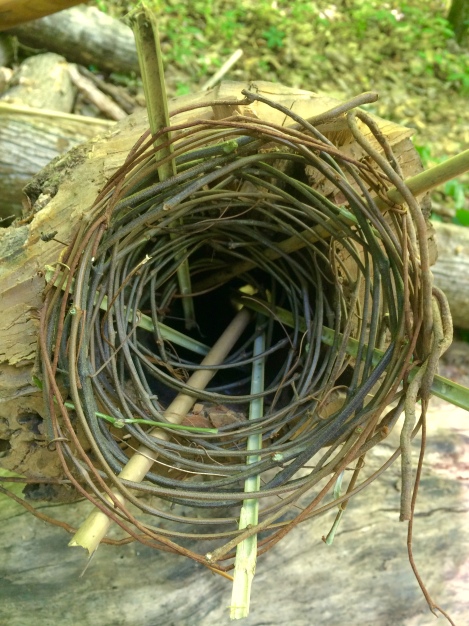
The woven funnel is inserted in one end of a hollow log with the other opening plugged to create a bushcraft crawfish trap.
Blast Fishing
Using an explosive device to stun or kill fish for easy collection is illegal for sure. It also destroys and disrupts other life in the ecosystem. A small M80 (small stick of dynamite) will stun and kill fish in a pool of water. Survival use ONLY.
Chumming
This method is used to attract fish to easy food sources. You’ve likely seen it used as an attractant on Shark Week. It’s like feeding ducks at the park. Word spreads because fish love an easy meal.
Rotting animal flesh, insects, worms/grubs, or fish guts can be cut into small pieces and scattered into the water. This technique works best when done on a regular routine. You may not have this luxury in a short-term situation. Drop a baited hook into the chum area to increase your chance of snagging a fish. Or you might even catch a turtle.
Again, before using these proven fish catching techniques for long-term self-reliance, do your due diligence. For survival, do what you have to do to stay alive.
You got any survival fishing tales? We’d love to hear them in the comments!
Keep Doing the Stuff of Self-Reliance,
Todd
P.S. – You can also keep up with the Stuff we’re Doing on Twitter, Pinterest, Google +, YouTube, Instagram, and Facebook… and over at the Doing the Stuff Network. P.P.S – If you find value in our blog, Dirt Road Girl and I would appreciate your vote on Top Prepper Sites! You can vote daily by clicking here or on the image below. Check out all the other value-adding sites while you’re there… 
Thanks for Sharing the Stuff!
Copyright: Content on this site (unless the work of a third-party) may be shared freely in digital form, in part or whole, for non-commercial use with a link back to this site crediting the author. All links in articles must remain intact as originally posted in order to be republished. If you are interested a third-party article, please contact the author directly for republishing information.
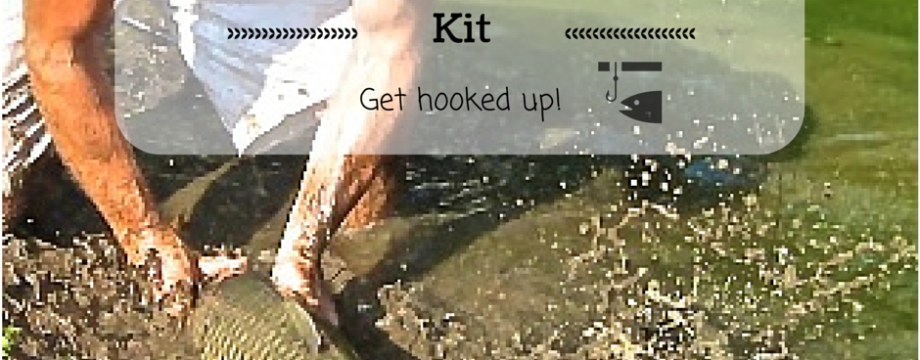
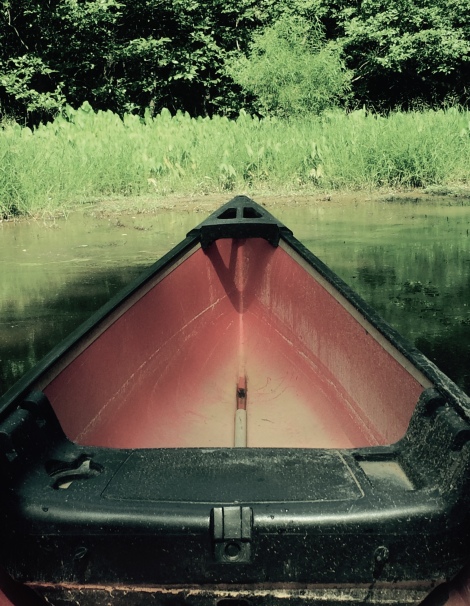
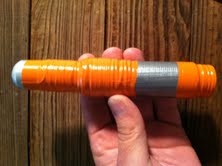
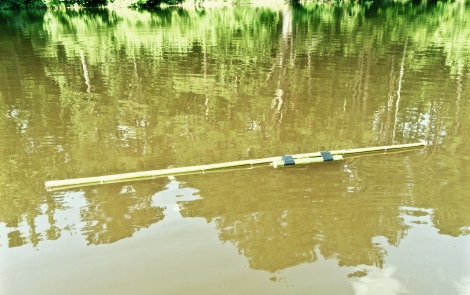
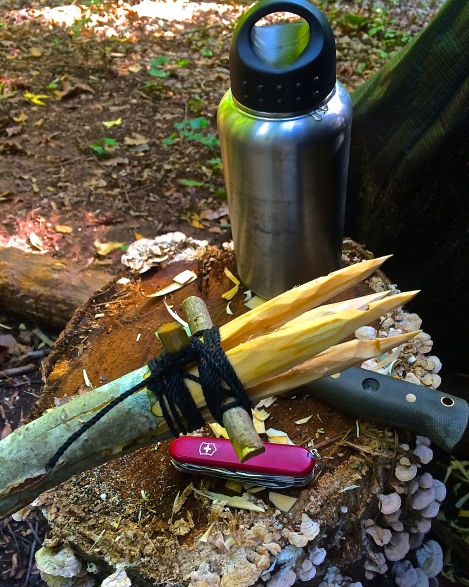








What size bank line?It appears that it is sold by (arbitrary?) # with no correlation to diameter or tensile strength offered.keep the Faith, Bill
Date: Sun, 21 Jun 2015 00:08:43 +0000 To: billdean36726@hotmail.com
LikeLike
#12 and #36 is what I use, Bill. Sorry. I should of added that to the post. I’ll update it. Thank, bud!
LikeLike
(not spam)
If you view the PDF at: http://www.seamar.com/images/rope/twineSizeChart.pdf at 100%, you can see actual sizes of the #gauge bankline / twine sizes
LikeLike
Heck if I ran across Polkwed or Polk salad as we call it here in the south I’d yank it up boil it 3 xs and have me a feast! Toss in some bird eggs and vala however bird eggs ain’t worth the climb most times and usually have a baby bird soon to hatch in it. But Polk salad in it’s self is often feared due to it toxicity , but it’s just over loaded in vitimen A it’s not actual posion . Simple to prepare wash it bring to a hard boil pour out water add more water repeat 2 more xs. Be careful to not eat the berrys because they are actually deadly. But easy not to get them in your with Polk salad . Anyway. Thought id point that out .. We are talking survival here right? Foraging is part of surviving. Kim
LikeLike
Back in my childhood, I use regular balloons to catch Bluegill, Crappie, and Large-Mouth Bass. The only downside was that large fish tended to pull the balloon under and run through submerged structure that tended to rupture the balloon. Though I never have tried it, I suppose that a weather balloon would prevent the problem.
LikeLike
Never tried balloons. They’re light and easy to pack. Thanks for the tip, ron!
LikeLike
That should be “used”.
LikeLike
Bucket trot line. Use 5 gallon metal buckets, take a 5 inch fence post and place one end in bucket. Crush the bucket opening around the fence post leaving a 5 inch opening. Punch holes all thru the bucket so it sinks fast and drains fast. Tie a drop line on the bucket at the opening thru a punched hole. Then run this drop line up to main trot line. Do as many buckets as you can. Place them in the water as you string the trot line out. Wait several weeks and go back, you will usually find two breeding cats in each buckets about 1 to 2 pounds each. This is the best eating size. Believe me it works every time if catfish is what you are after and they are in the water.
LikeLike
Huh, never heard of this technique, Joe. I’ll give it a shot next time we’re at the Dam Cabin. I’ll send you a pic to see if it looks right before I try it.
Thanks for sharing the idea, Joe!
LikeLike
Hey Todd-
You might want to add a few treble hooks to the kit for snagging. Although potentially illegal….they could very effective when nothing is biting.
All the best,
Jim
ps: I’d like to see a future article on making/using a solar still.
LikeLike
They are great to have and I keep one in my Cigar Kit stuck in a wine cork to hold it all in.
On the solar still, I’ve never been a fan of those. They may work in some locales but there is too many other water sources and ways to disinfect water for me. I’ll look into it again though. Thanks for the tip and suggestion, Jim!
LikeLike
Great article, very educational, and I enjoyed it, but it never ceases to amaze me that some writers, including you, are saying that most of us will never be in a real survival situation. Sir, that is exactly where almost all of us are headed after shft. So let’s stop fooling ourselves and take the dark side of teotwawki much more seriously, please. thanks
LikeLike
Thanks for reading and sharing your thoughts, Messenger. To put my statement in context, “real survival situation”, I was referring to outdoors people in a wilderness setting hiking, camping, etc. The one point I made in the article is that many of us, my family included, are planning for long-term self-reliance by developing skills.
I choose to focus on building of the skills needed to be self-reliant instead of fearing what the future may hold. Make no mistake, I’ve spent years living on the dark side of the doomsday scenario and have found peace and purpose in shifting in my mindset. Not in the sand, mind you.
Could a total collapse happen? Sure. Do I plan for that event? In a round about way, I guess I do. With every skill I learn and practice I grow more independent and less dependent on others.
There are so many personal SHTF scenarios DRG and I have been through that made us realize just how fragile this life is. Skills give us options which adds anti-fragility to our family.
Again, I appreciate you expressing your view. And, as always, keep doing the stuff of self-reliance, Messenger!
LikeLike
Pingback: Prepper News Watch for June 22, 2015 | The Preparedness Podcast
In 35 International Wilderness Survival Tricks by Joseph A. Laydon, it describes a trick by taking a straw (one with a red stripe) and making a lure out of it.
Pretty much cut it about 1″ or 1/2″ and run it down the line with the hook sticking out the back. You can put a little lead on there to keep it submerged if you want. Fish it like a regular lure.
LikeLike
Nice tip, John! I’ve also seen paracord used as a lure.
LikeLike
Reblogged this on North Carolina Oath Keepers.
LikeLike
i like unscented dental floss for the small fishing kit. you can get spools 400 yards long. it is very strong.
also the big tip about spear fishing is that the water refracts the image. the fish ain’t where it looks like it is.
that’s why you see all the people on all the survival programs MISS the fish.
LikeLike
Great idea on the dental floss, Steve! I’ve missed my fair share of fish and crawdads because of the refracting image beneath the water’s surface.
Thanks again for the comment and tip!
LikeLike
You should throw in a couple of ice fishing lures. They weigh next to nothing and catch everything from minnows on up.
LikeLike
To be honest, in GA I’ve never been ice fishing but ya never know. Bet they’d work without the ice 😉
LikeLike
neither have I but ice fishing jigs or the double ended rapala minnows suspended beneath a bobber is very effective
LikeLike
Can use a net type nylon hammock as a gill net. works well. I try to think outside the box.
Preston/ Katcv’s Edge Outdoor
LikeLike
Good multi-use item and idea, Preston! I’ve got a cargo net stowed at my shelter that can serve both purposes.
Keep Doing the Stuff!
Todd
LikeLike
Another trick I’ve used is too place a minnow seine and animal skin weighted with a rock in a stream. As crawdad’s and minnows gather on skin lift seine. you now have a meal and bait.
Preston/ Katcv’s Edge Outdoor
LikeLike
We used to use old window screens for this method when I was a kid. Works great. Crawdads love bacon too.
LikeLike
Do you form the screen as a weir then? I have never tried it, but would like to. More information please. Congrats on being one of the very few bloggers to actually print useable information. Keep up the good work
Preston/ Katcv’s Edge Outdoors
LikeLike
Thank you for these tips! !
LikeLike
Sure man! Hope it helps.
LikeLiked by 1 person
Sure!!!!I’ve made, months ago, an hobo wooden fishing kit..I’ve to write about it but I’m so slow! Ahhh My ‘spaghetti’ English ! Ciao Mattia
LikeLike
No prob man. My English marginal at best 😉 Look forward to seeing it!
LikeLike
Has anyone here used the YoYo fishing reels? Just got a dozen of these which are legal in my state–they’re seen as a trotline with a single hook, and only one per body of water is deployed. You tie them to a tree and bait your hook and drop over the bank.
LikeLike
my son used them for cats and turtles for years
I have a brother living in the Ozarks who uses them with baited trebles for birds and squirrels and as automatic snares
LikeLike
Pingback: Hunt-Gather-Eat: Identifying Plants the Real Food Eats | Survival Sherpa
Pingback: How to Bushcraft a Hollow Log Crawfish Trap | Survival Sherpa
another method of fishing – highly illegal most places – an electrical shock ….
the old fashion crank phones generate enough amperage to shock a good sized pool of water …. crank crank and you have fish floating …
LikeLike
You showed a picture of someone tickling, but never said anything about it. This is my husband and sons’ favorite way of salmon fishing in the fall. Never taking more than a meal, although I’m looking into smoking them this fall…
LikeLike
There are several different fishing methods used in Cambodia, see you-tube videos, https://www.youtube.com/watch?v=Ja3vfmRieBg&t=107s this one is digging a hole at the edge of a swampy lake, use a canal, bait and they swim right into the hole and wait for you to pick them up. They have other methods too.
LikeLike
Never heard of Herbal chumming agents, but if they work and you have nothing else 🙂
LikeLike